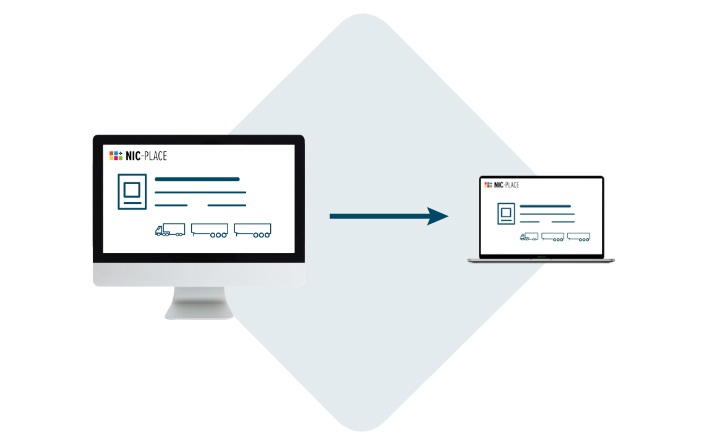Data Sharing Insights Part 1: An overview of methods of data exchange
Digital collaboration along the supply chain. Sharing telematics data with customers during transport. Data as a basis for more effectiveness and efficiency in the company. This all sounds absolutely conclusive, but unfortunately the practice is far more complex. Simple processes are suggested by open platforms which permanently process the data of their service providers for their customers and finally share it during the transport to their customers – a standardised process.
What’s the problem? The data owner cannot administer, i.e. set up, track, control or even revoke data releases on his own. He runs the risk of losing more and more control over his own data and most of all his own networks. Consequently, the data subscriber is dependent on his telematics service providers to connect the fleets data with numerous open visibility platforms.
Since transport and logistics processes are as individual as every single company behind them, it is difficult to fit into a defined standard process. NIC-Place provides an alternative approach to the competition. For the challenges listed above, we provide our customers with optimized and self-administering tools that enable secure and demand-oriented data exchange with maximum control – regardless of whether the transport is planned by the customer or by the service provider itself. Naturally with the same purpose of creating transparency for those involved along the supply chain:
Approval for data sharing by data provider
Permanent data sharing of vehicles: “Permanent” means that the asset data will be shared 24/7 as long as the release exist s. The permanent access to data is particularly interesting for companies with a fixed pool of subcontracted vehicles that are scheduled by the customer.
Data sharing of vehicles for tours: “For tours” means that asset data is only shared during an ongoing transport, so-called tour. This type of data sharing is suitable for use with recurring subcontractors whose transports are planned by the ordering party. Data release is linked to entering loading and unloading addresses coupled with time frames.
Tour release via weblink: This method of data sharing creates transparency for third parties by means of a link that can be generated per transport. This enables the transport company to provide its customers with an uncomplicated weblink insight into the process of the transport – without any technical hurdles.
Request for data sharing by data subscriber
You are planning loading and unloading points and routes, but you do not know the asset that will carry out the transport on your behalf? No problem, you can simply digitally ask your subcontractor via data request to assign the appropriate vehicle license plate number to the tour. The data is then shared once only during the defined transport.
GPS data via Tourdriver App: This method of data sharing is especially useful for spot market subcontractors that do one way transports for your company and where the telematics data is not available short term from the asset. The link is opened in a customisable App and contains all relevant data to automatically track the tour.
A detailed look at the individual methods of data sharing will be presented in our next post.
Stay tuned and learn everything you need to know about digital and secure data sharing!
